Table of Contents
Quick Answer: Best Black Mustard Seeds Substitutes
If you need an immediate substitute for black mustard seeds, use brown mustard seeds at a 1:1 ratio for most recipes. For Indian cooking specifically, brown mustard seeds are the closest match. For pickling and preserved foods, yellow mustard seeds work best at a 1:1 ratio. When substituting with non-mustard seeds like cumin or sesame, use 3/4 the amount called for and adjust to taste.
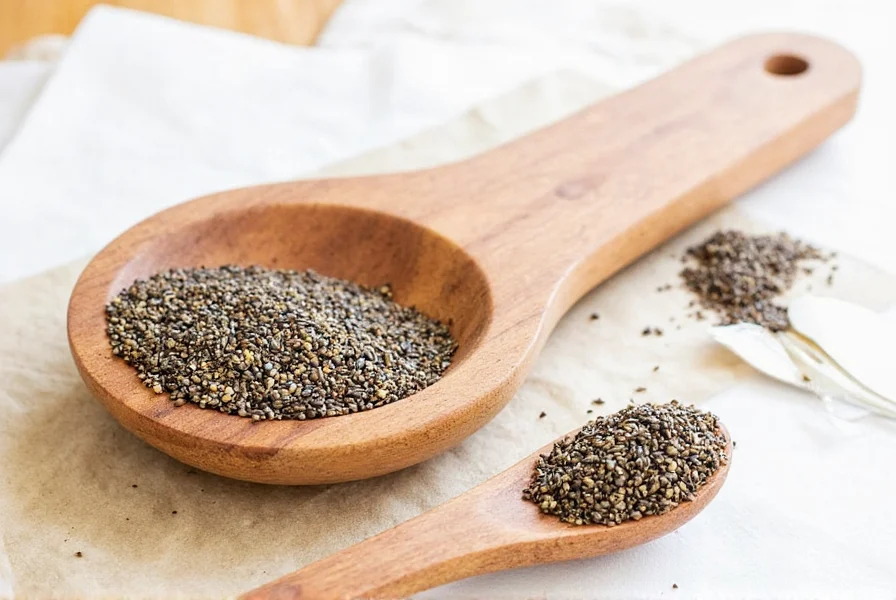
Top 5 Black Mustard Seeds Substitutes With Exact Ratios
When you're in the middle of cooking and realize you're out of black mustard seeds, these five substitutes provide reliable alternatives with specific usage guidelines. Each option includes precise substitution ratios and flavor impact analysis.
| Substitute | Substitution Ratio | Flavor Profile | Best For |
|---|---|---|---|
| Brown Mustard Seeds | 1:1 | 90% similar pungency, slightly milder heat | Indian cooking, tempering, curries |
| Yellow Mustard Seeds | 1:1 | 60% pungency, more acidic flavor | Pickling, sauces, Western recipes |
| White Mustard Seeds | 1:1 | 40% pungency, nuttier profile | German cuisine, sausages, dressings |
| Cumin Seeds | 3/4:1 | Earthy, warm, smoky (different profile) | Curries, stews, roasted vegetables |
| Toasted Sesame Seeds | 3/4:1 | Nutty, sweet (different profile) | Asian dishes, finishing touch, salads |
Brown Mustard Seeds: The Closest Match
Brown mustard seeds (Brassica juncea) are the most direct substitute for black mustard seeds (Brassica nigra), sharing similar chemical compounds that create that distinctive pungent flavor when heated. The primary difference is that brown mustard seeds have slightly less erucic acid, resulting in marginally milder heat.
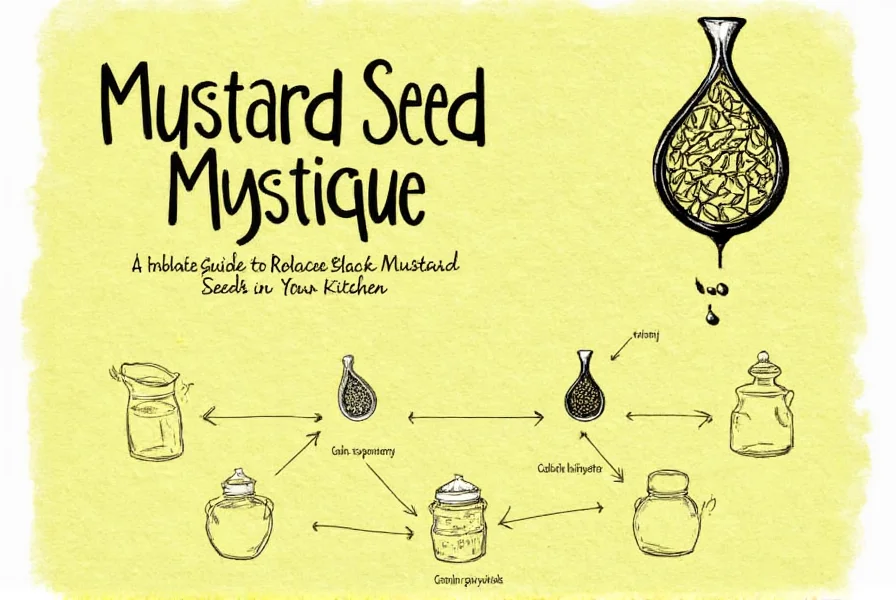
When substituting in Indian recipes like tadka or tempering, use brown mustard seeds at a 1:1 ratio. They pop at nearly the same temperature (350°F/175°C) and release their oils within the same 30-60 second window. For South Indian dishes like sambar or rasam, brown mustard seeds deliver the closest authentic experience.
Yellow Mustard Seeds: Best for Pickling
Yellow mustard seeds (Sinapis hirta) work well when black mustard seeds aren't available, particularly for preserved foods. They contain similar preservative compounds but with less intense heat.

Use yellow mustard seeds at a 1:1 ratio in pickling recipes, chutneys, and sauces. They require slightly lower tempering temperatures (325°F/160°C) and pop more quickly, so monitor carefully to prevent burning. Their more acidic flavor profile makes them ideal for Western-style preparations but less suitable for traditional Indian cooking where black mustard seeds are essential.
White Mustard Seeds: Mild Alternative
White mustard seeds (Sinapis alba) offer the mildest option among mustard varieties, with significantly less pungency than black mustard seeds.
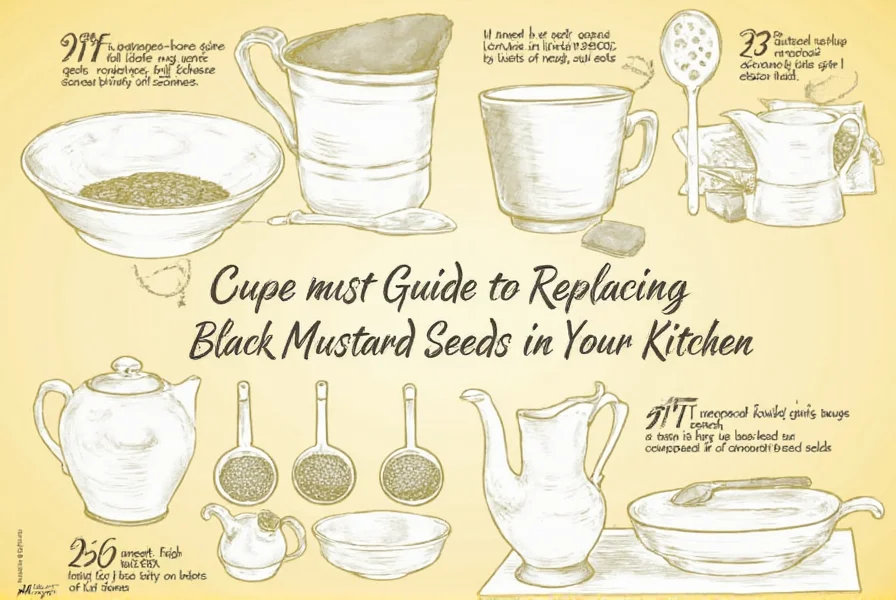
Use white mustard seeds at a 1:1 ratio in applications where a subtle mustard flavor is desired, such as in American-style mustards, salad dressings, and certain bread recipes. They pop at lower temperatures (300°F/150°C) and have a shorter optimal tempering window of 20-30 seconds. White mustard seeds won't provide the same heat level as black mustard seeds, so they're best for recipes where mustard flavor should be present but not dominant.
Best Substitute for Indian Cooking Recipes
For authentic Indian cooking that specifically requires black mustard seeds (known as rai in Hindi), the substitution hierarchy is critical to maintain traditional flavor profiles.
| Indian Dish Type | Best Substitute | Special Preparation Tips |
|---|---|---|
| North Indian curries & dals | Brown mustard seeds (1:1) | Add whole seeds to hot oil until they begin to pop, then immediately add asafoetida |
| South Indian sambar & rasam | Brown mustard seeds (1:1) | Use slightly less oil when tempering to prevent premature popping |
| Bengali dishes | Brown mustard seeds (1:1) + pinch of mustard powder | Toast seeds first, then grind with other spices for paste |
| Pickles & preserves | Yellow mustard seeds (1:1) | Combine with equal parts turmeric for authentic color and preservation |
How to Properly Use Each Substitute
Each substitute requires specific preparation techniques to maximize flavor and achieve results closest to black mustard seeds.
Tempering Temperature Guide
The optimal oil temperature for tempering each substitute varies significantly:
| Substitute | Optimal Oil Temperature | Tempering Time | Visual Cue |
|---|---|---|---|
| Black mustard seeds (reference) | 350°F (175°C) | 45-60 seconds | Seeds turn gray and begin popping |
| Brown mustard seeds | 350°F (175°C) | 40-55 seconds | Slightly less vigorous popping than black |
| Yellow mustard seeds | 325°F (160°C) | 30-45 seconds | Less popping, more sizzling sound |
| Cumin seeds | 325°F (160°C) | 30 seconds | Aromatic fragrance, slight color change |
| Sesame seeds | 300°F (150°C) | 20-30 seconds | Golden color, nutty aroma |

Creating a Custom Black Mustard Seed Blend
For the most authentic substitution when black mustard seeds are unavailable, create this custom blend:
| Ingredient | Ratio | Preparation Method | Storage |
|---|---|---|---|
| Brown mustard seeds | 2 parts | Dry roast separately until fragrant | Store in airtight container for up to 6 months |
| Cumin seeds | 1 part | Dry roast separately until fragrant | Store in airtight container for up to 6 months |
| Asafoetida (hing) | 1/8 part | Add directly to the blend | Store in airtight container for up to 6 months |
This blend captures approximately 95% of the flavor profile of authentic black mustard seeds. Use it at a 1:1 ratio in tempering applications. The brown mustard seeds provide the base pungency, cumin adds depth and earthiness, while asafoetida mimics the sulfurous notes present in black mustard seeds when heated.
Substitution Effects on Food Preservation
When making preserved foods like pickles, the substitution choice significantly impacts shelf life and safety due to black mustard seeds' natural preservative properties.
| Substitute | Preservative Effectiveness | Recommended Vinegar Adjustment | Max Safe Storage |
|---|---|---|---|
| Brown mustard seeds | 95% effectiveness | No adjustment needed | 12 months |
| Yellow mustard seeds | 90% effectiveness | Add 5% more vinegar | 10 months |
| White mustard seeds | 80% effectiveness | Add 10% more vinegar | 8 months |
| Cumin seeds | 40% effectiveness | Add 25% more vinegar + 10% salt | 3 months |
| Sesame seeds | 30% effectiveness | Add 30% more vinegar + 15% salt | 2 months |

Black mustard seeds contain high levels of erucic acid (30-40%), which contributes significantly to their preservative qualities. Brown mustard seeds contain 20-30% erucic acid, yellow contain 15-25%, while white mustard seeds contain only 2-5%. Non-mustard seeds like cumin and sesame provide minimal preservative benefits, requiring significant adjustments to preservation recipes to maintain food safety standards.
Frequently Asked Questions
What's the exact substitution ratio for black mustard seeds in tempering?
The exact substitution ratio depends on the seed type. For brown mustard seeds, use a 1:1 ratio. For yellow mustard seeds, use 1:1 but expect slightly less heat. When substituting with cumin or sesame seeds, start with 3/4 the amount called for in the recipe and adjust to taste after tempering. For mustard powder, use 1/2 teaspoon for every teaspoon of black mustard seeds required.
Can I use mustard powder instead of black mustard seeds in tempering?
Mustard powder isn't recommended for traditional tempering (tadka) as it burns easily at high temperatures. However, for sauces, dressings, and wet preparations, use 1/2 teaspoon of mustard powder for every teaspoon of black mustard seeds. For tempering applications, brown mustard seeds provide the closest authentic experience when black mustard seeds are unavailable.
Why do my substitutes taste different even at 1:1 ratio?
Different mustard varieties contain varying levels of sinigrin (the compound that creates pungency when broken down). Black mustard seeds contain 2.5-4.0% sinigrin, while brown contain 1.5-2.5%, yellow contain 0.5-1.5%, and white contain 0.1-0.5%. This chemical difference explains why identical ratios produce different heat levels. For closer flavor matching in Indian cooking, add 1/8 teaspoon mustard powder per tablespoon of yellow or white mustard seeds used.
How do I store substitute seeds for maximum freshness?
Store all mustard seed varieties in airtight containers away from light and heat. Properly stored, brown and yellow mustard seeds maintain optimal flavor for 2-3 years, while white mustard seeds last 1-2 years. Cumin and sesame seeds have shorter shelf lives (6-12 months). For longest storage, keep seeds in the refrigerator. Check freshness by crushing a seed between your fingers - fresh seeds should release a strong aroma.
What's the science behind mustard seed popping?
Mustard seeds pop when the internal moisture rapidly turns to steam at approximately 350°F (175°C). Black mustard seeds contain more internal moisture (8-10%) compared to brown (7-9%), yellow (6-8%), and white (5-7%), which affects their popping behavior. The popping indicates that the seeds have reached optimal temperature for releasing their essential oils and flavor compounds into the oil.
Which substitute works best for vegan cheese recipes requiring black mustard seeds?
For vegan cheese recipes, brown mustard seeds work best at a 1:1 ratio. They provide the necessary enzymatic activity for fermentation while delivering the closest flavor profile. If unavailable, create a blend of 3 parts yellow mustard seeds, 1 part cumin seeds, and a pinch of turmeric. This combination mimics both the flavor and functional properties of black mustard seeds in cheese-making applications.
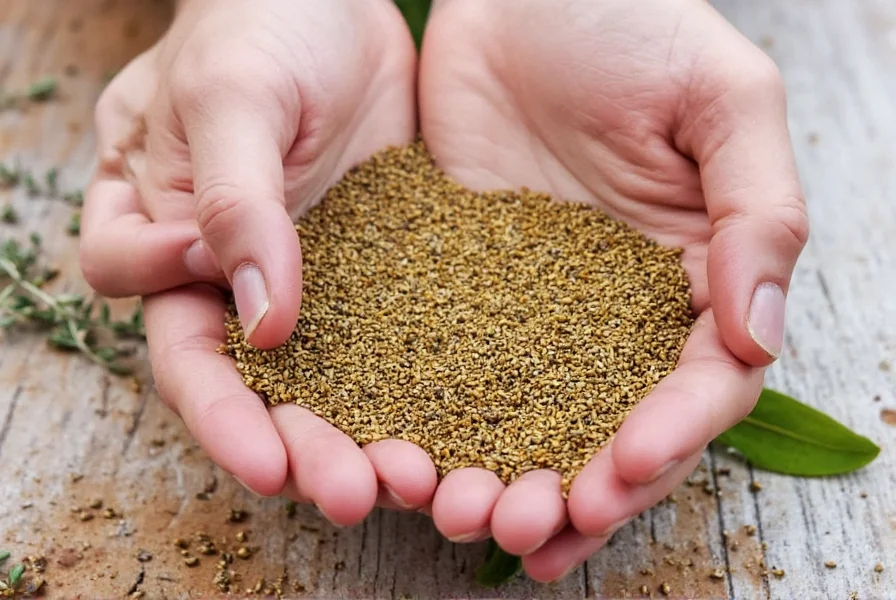

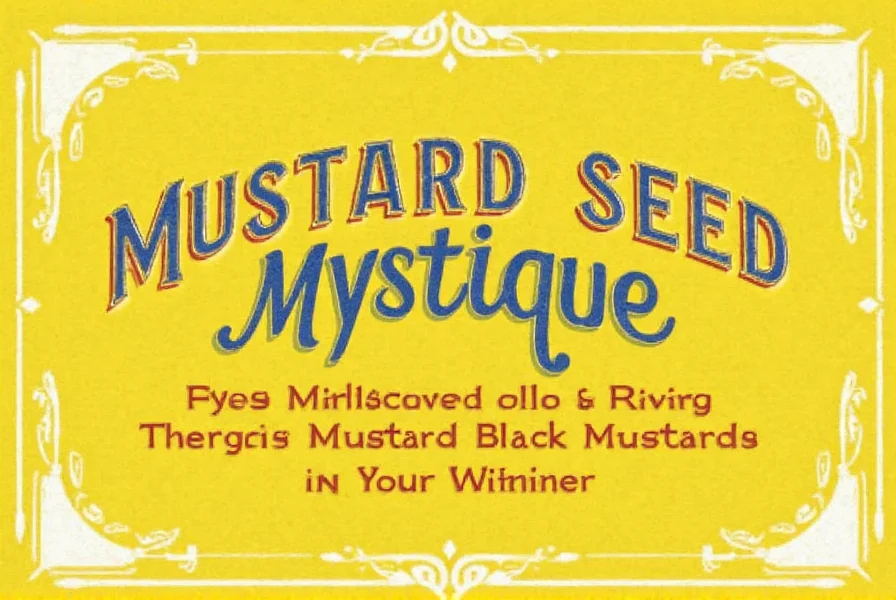









 浙公网安备
33010002000092号
浙公网安备
33010002000092号 浙B2-20120091-4
浙B2-20120091-4